#April 1865
Explore tagged Tumblr posts
Text

54 notes
·
View notes
Text
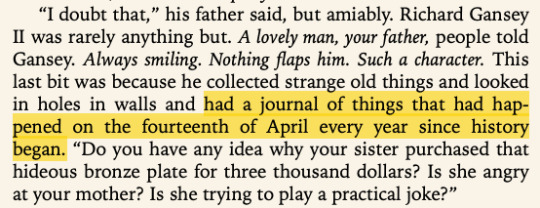
very important day for richard gansey ii apparently
#rchl#trc#the following happened on april 14th:#lincoln assassination 1865#mt vesuvius eruption 1906#john singer sargent death 1925#titanic iceberg collision 1912#amongst many other events listed in a wikipedia page i just spent 10 minutes staring at#mt vesuvius and sargent's death are not in that article but i had them written down in my chapter notes
399 notes
·
View notes
Text
After an academic discussion about the ramifications of trying to benefit from time travel, Peter Corrigan suddenly found himself transported from 1961 back to April 14th, 1865. Corrigan desperately tried to prevent the assassination of President Abraham Lincoln. While his efforts were in vain, thanks in part to the intervention of John Wilkes Booth, when Corrigan did return to the present he found that he had altered the course of time after all. ("Back There" Twilight Zone, TV)

#nerds yearbook#sci fi tv#tz#twilight zone#1961#april#1865#rod serling#david orrick mcdearmon#time travel#russell johnson#pete corrigan#paul hartman#barlett robinson#william#john lasell#jonathon wellington#jimmy lydon#raymond bailey#millard#raymond greenleaf#jackson#john eldredge#whittaker#james gavin#jean inness#mrs landers#lew brown#abraham lincoln#john wilkes booth
7 notes
·
View notes
Text

“Now if Gen. Meade can complete his work so gloriously prosecuted thus far, by the litteral or substantial destruction of Lee's army, the rebellion will be over.” Abraham Lincoln, July 7, 1863.
Record Group 94: Records of the Adjutant General's Office Series: Generals' Papers and Books File Unit: Papers and Books of Major General Henry W. Halleck
Transcription:
[in blue pencil in upper right margin "5193']
War Department
Washington City
July 7 186[ink splat]
Major Genl. Halleck
We have certain information that
Vicksburg surrendered to Gen. Grant on the
4th of July. Now if Gen. Meade can complete
his work so gloriously prosecuted thus far, by
the litteral or substantial destruction of Lee's army,
the rebellion will be over.
Yours truly
A.Lincoln [signature]
#archivesgov#July 7#1863#1800s#Civil War#U.S. Civil War#Abraham Lincoln#yeah#that if is doing a lot of heavy lifting#spoiler#Lee surrendered in April 1865
29 notes
·
View notes
Text

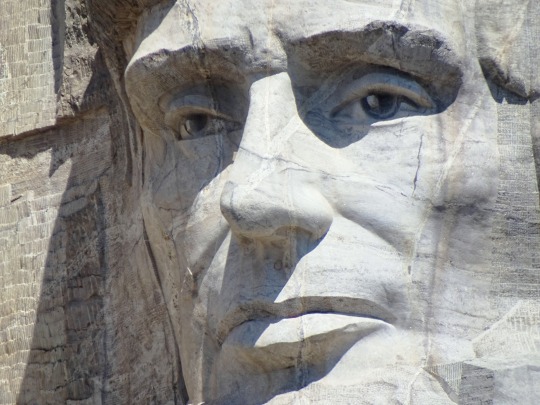

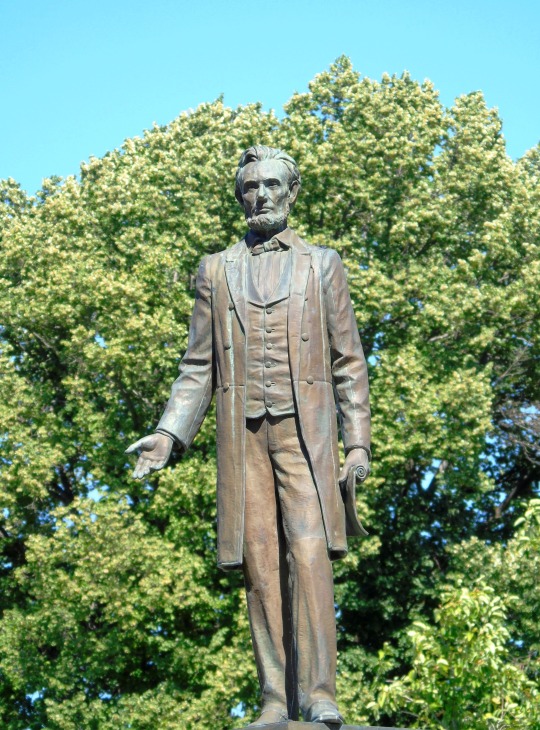

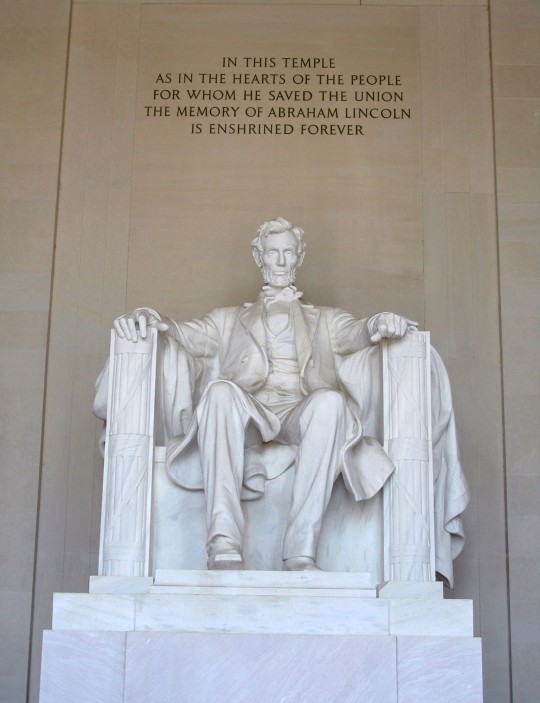


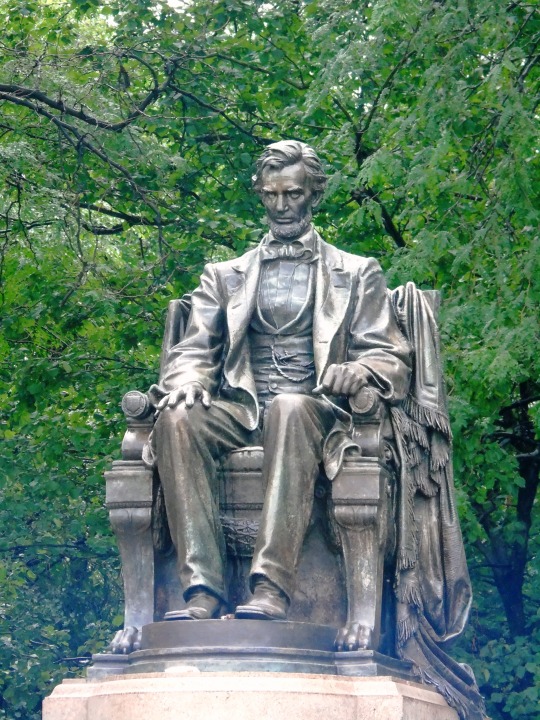


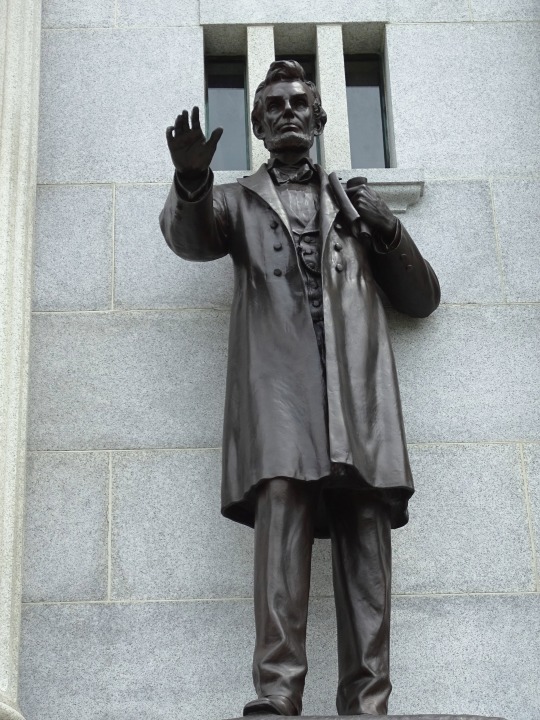

President Abraham Lincoln died on April 15, 1865 after being shot the previous evening by actor John Wilkes Booth.
#Robert Russin#Mount Rushmore National Memorial#Gutzon Borglum#USA#J. Otto Schweizer#Gettysburg National Military Park#Henry K. Bush-Brown#Stanley J. Watts#Abraham Lincoln#died#death#15 April 1865#US history#anniversary#original photography#sculpture#tourist attraction#summer 2019#travel#vacation#Daniel Chester French#landmark#architecture#cityscape
2 notes
·
View notes
Text

0 notes
Text
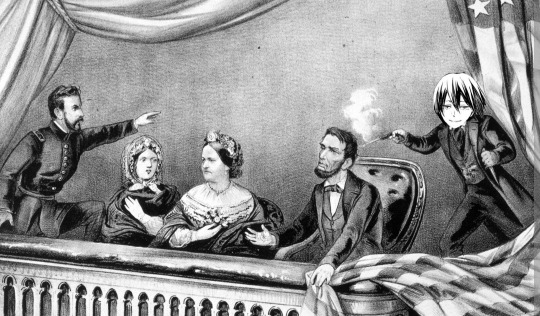
Fyodor Dostoevsky at Abraham Lincolns assassination, April 15, 1865!
403 notes
·
View notes
Photo


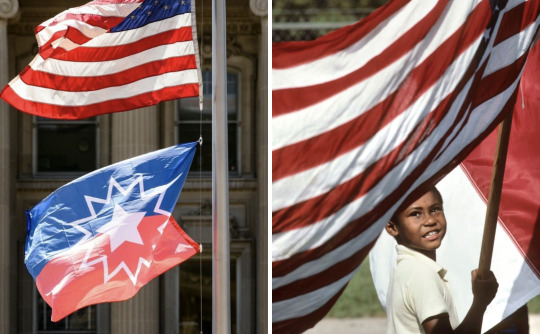



Juneteenth is a Black American holiday.
We call Juneteenth many things: Black Independence Day, Freedom Day, Emancipation Day, Jubilee Day. We celebrate and honor our ancestors.
December 31 is recognized as Watch Night or Freedom’s Eve in Black American churches because it marks the day our enslaved ancestors were awaiting news of their freedom going into 1863. On January 1, 1863, President Lincoln issued the Emancipation Proclamation. But all of the ancestors wouldn’t be freed until June 19, 1865 for those in Galveston, Texas and even January 23, 1866 for those in New Jersey (the last slave state). (It’s also worth noting that our people under the Choctaw and Chickasaw Nations wouldn’t be freed until April 28, 1866 and June 14, 1866 for those under the Cherokee Nation by way of the Treaties.)
Since 1866, Black Americans in Texas have been commemorating the emancipation of our people by way of reading the Emancipation Proclamation and coming together to have parades, free festivities, and later on pageants. Thereafter, it spread to select states as an annual day of commemoration of our people in our homeland.
Here’s a short silent video filmed during the 1925 Juneteenth celebration in Beaumont, Texas:
youtube
(It’s also worth noting that the Mascogos tribe in Coahuila, Mexico celebrate Juneteenth over there as well. Quick history lesson: A total of 305,326 Africans were shipped to the US to be enslaved alongside of American Indians who were already or would become enslaved as prisoners of war, as well as those who stayed behind refusing to leave and walk the Trail of Tears to Oklahoma. In the United States, you were either enslaved under the English territories, the Dutch, the French, the Spanish, or under the Nations of what would called the Five “Civilized” Native American Tribes: Cherokee, Creek (Muscogee), Chickasaw, Choctaw, and Seminoles. Mascogos descend from the Seminoles who escaped slavery during the Seminole Wars, or the Gullah Wars that lasted for more than 100 years if you will, and then settled at El Nacimiento in 1852.)
We largely wave our red, white and blue flags on Juneteenth. These are the only colors that represent Juneteenth. But sometimes you may see others wave our Black American Heritage flag (red, black, and gold).
Juneteenth is a day of respect. It has nothing to do with Africa, diversity, inclusion, immigration, your Pan-African flag, your cashapps, nor your commerce businesses. It is not a day of “what about” isms. It is not a day to tap into your inner colonizer and attempt to wipe out our existence. That is ethnocide and anti-Black American. If you can’t attend a Black American (centered) event that’s filled with education on the day, our music, our food and other centered activities because it’s not centered around yours…that is a you problem. Respect our day for what and whom it stands for in our homeland.
Juneteenth flag creator: “Boston Ben” Haith
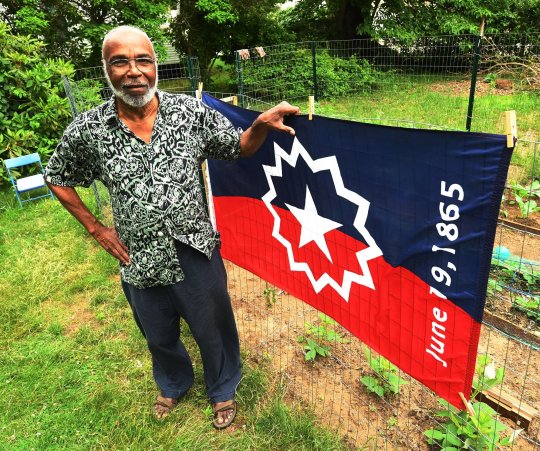
It was created in 1997. The red, white and blue colors represent the American flag. The five-point star represents the Lone State (Texas). The white burst around the star represents a nova, the beginning of a new star. The new beginning for Black Americans.
Black American Heritage Flag creators: Melvin Charles & Gleason T. Jackson

It was created in 1967, our Civil Rights era. The color black represents the ethnic pride for who we are. Red represents the blood shed for freedom, equality, justice and human dignity. Gold fig wreath represents intellect, prosperity, and peace. The sword represents the strength and authority exhibited by a Black culture that made many contributions to the world in mathematics, art, medicine, and physical science, heralding the contributions that Black Americans would make in these and other fields.

SN: While we’re talking about flags, I should note that Grace Wisher, a 13-year-old free Black girl from Baltimore helped stitched the Star Spangled flag, which would inspire the national anthem during her six years of service to Mary Pickersgill. I ain’t even gon hold you. I never looked too far into it, but she prob sewed that whole American flag her damn self. They love lying about history here until you start unearthing them old documents.
In conclusion, Juneteenth is a Black American holiday. Respect us and our ancestors.
#juneteenth#juneteenth flag#black american history#black american culture#ben haith#black american heritage flag#melvin charles#gleason t jackson#grace wisher#american flag#mascogos#juneteenth 2023
1K notes
·
View notes
Text

HEARTWARNING: RARE IMAGE OF PJACKK'S GRANDFATHER FOUND SLUTTING IT UP AT FORD'S THEATRE, April 14, 1865
115 notes
·
View notes
Text

It is believed that Ludwig van Beethoven completed “Für Elise” on April 27, 1810. One of the most famous and recognizable pieces of piano music in the world, the piece was not discovered and published until 40 years after Beethoven’s death in 1865.
72 notes
·
View notes
Photo

George Armstrong Custer
George Armstrong Custer (l. 1839-1876) was an officer in the US Army, serving in the cavalry from 1861 to 1865 during the American Civil War and the wars against the Plains Indians 1866-1876. Although he became a widely recognized hero during the Civil War, he is best remembered for his death at the Battle of the Little Bighorn.
Custer established a reputation for recklessness, courage, and self-promotion early in the Civil War and, by 1863, after the Battle of Gettysburg, was a national hero. He blocked the retreat of General Robert E. Lee (l. 1807-1870) in April 1865 and was present at Appomattox Court House when Lee surrendered to General Ulysses S. Grant (l. 1822-1885). After the war, he oversaw Reconstruction in Texas before taking command of the newly formed 7th Cavalry in campaigns against the Native Americans of the West.
He led his troops against the Cheyenne people at the Washita Massacre/Battle of the Washita River in November 1868 and, ignoring the terms of the Treaty of Fort Laramie of 1868, marched his troops into the Black Hills in 1874 where he discovered gold. News of this discovery soon brought more settlers and miners into Sioux and Cheyenne territory, igniting the Great Sioux War of 1876-1877. At the Battle of the Little Bighorn (25-26 June 1876) Custer and his men were slaughtered by Arapaho, Cheyenne, and Sioux warriors under chief Sitting Bull (l. c. 1837-1890). Afterwards, thanks in large part to the efforts of his wife, Elizabeth Bacon "Libbie" Custer (l. 1842-1933), George Armstrong Custer came to be regarded as a great American hero.
His legacy and reputation held until shortly before the Second World War (1939-45) when scholars began challenging the traditional narrative. Today, Custer is a controversial figure, often condemned for his brutality and ruthlessness. Although Custer should certainly be held accountable for his actions, it must also be recognized that he was primarily advancing the genocidal policies of his government which saw the American Indian as an obstacle to progress, civilization, and Manifest Destiny.
Early Years & West Point
George Armstrong Custer was born on 5 December 1839 in New Rumley, Ohio, to Emanuel Henry Custer, a blacksmith, and his second wife, Marie Ward Kirkpatrick. He was named after a minister as his mother hoped this would encourage him to follow that path. He had three older half-siblings from his mother's first marriage and four full siblings, including Thomas and Boston, who would also join the military and die with him in battle.
He was sent to live with his older half-sister and her family in Monroe, Michigan, to attend school and met the girl who would one day become his wife, Elizabeth Clift Bacon. After graduating, he moved to Hopedale, Ohio, and enrolled at the Hopedale Normal College, pursuing a teaching degree. He began his teaching career in Cadiz, Ohio, in 1856 and boarded at the home of the Holland family, where he fell in love with the daughter, Mary Jane Holland. He hoped to marry her but found little opportunity for advancement in Ohio, so he decided to change careers and apply to West Point Military Academy. Scholar Nathaniel Philbrick comments:
He'd been a seventeen-year-old schoolteacher back in Ohio when he applied to his local congressman for an appointment to West Point. Since Custer was a Democrat and the congressman was a Republican, his chances seemed slim at best. However, Custer had fallen in love with a local girl, whose father, hoping to get Custer as far away from his daughter as possible, appears to have done everything he could to persuade the congressman to send the schoolteacher with a roving eye to West Point.
(47)
Custer entered West Point in July 1857 and, before the end of his first session, had earned 27 demerits. By graduation, he had been given more demerits than any of the other cadets in his class. After graduation in June 1861, he faced court martial for failing to break up a fight between cadets but was only reprimanded as the American Civil War was already underway. Many of Custer's classmates had left to fight for the Confederacy and the Union forces were in dire need of trained officers. Custer was commissioned a second lieutenant and sent to drill volunteers in Washington, D.C.
Continue reading...
33 notes
·
View notes
Note
Hello! I've been enjoying your writing references and notes, thank you for sharing! I was wondering, do you have any for something set during the Civil War? I've been sitting on the idea of writing a short story inspired by Little Women and I want to do it some justice at least. I would be happy with whatever you can offer <3
Writing Notes: The American Civil War
A four-year war (1861–65) between the United States and 11 Southern states that seceded from the Union and formed the Confederate States of America.
The two sides fought over the enslavement of African Americans and the rights of individual states.
The economy of the South relied on enslaving Black people to work on plantations of cotton and tobacco, while in the industrialized North, public opinion was in favor of ending slavery.
The war ended in 1865 with a Union victory.
THE UNION AND THE CONFEDERACY

By February 1861, 7 southern states (South Carolina, Mississippi, Florida, Alabama, Georgia, Louisiana, and Texas) had broken away from the rest of the US.
On 4 February, they agreed to form a separate government, the Confederate States of America.
The first shots of the war were fired at Fort Sumter in South Carolina on 12 April, and within 3 months, Virginia, Arkansas, North Carolina, and Tennessee had joined the Confederates.
23 states remained in the Union, including the slave-owning “border states”.

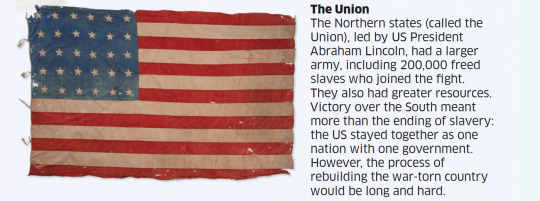
NEW TECHNOLOGY
The US Civil War was one of the first industrial wars in history, making use of modern technologies developed during the course of the 19th century. The war was fought across a wide area, so railways were critically important in carrying troops and supplies to where they were needed on the front lines. Generals were able to communicate with each other by telegraph.

Weapons. Fast-firing repeating rifles, such as the Spencer rifle, were used for the first time in the Civil War. The widely used “Napoleon” field gun could hit a target up to 1,600 m (5,250 ft) away. Also developed at this time was the Gatling gun, an early machine gun.

Ironclad battleships. Steam-powered battleships protected by iron or steel plates were known as ironclads. The first-ever battle between ironclads was fought in the Civil War in 1862, on the James River estuary in Virginia.

Modern Communications. In the Civil War, railroads moved troops around, aerial balloons spied across enemy lines, and the telegraph (above) sent and received instant information. Its receiver machine recorded messages on paper tape in Morse code, which uses dots and dashes to represent numbers and letters of the alphabet.
WAR PHOTOGRAPHY

The Civil War was one of the first conflicts to be extensively photographed. Dozens of photographers toured the battlefields, and their stark images of soldiers, dead and alive, brought shocking scenes of the war to the public around the world.

A Continental War. Most of the fighting in the war took place in Virginia, Maryland, and Pennsylvania in the east. There were also battles in Kentucky and Tennessee in the west and down the Mississippi River to New Orleans. In 1864, General William T. Sherman (above) conducted a major campaign in Georgia and the Carolinas.
TIMELINE
A nation divided. When 7 US states seceded (broke away) from the Union to form the Confederacy, President Lincoln refused to recognize the new government, and called on them to rejoin the Union. The Confederates refused, and tried to gain control of federal forts in the south. The stage was set for a bloody war that would last for the next 4 years.
12 April, 1861: Fort Sumter attacked. Confederate troops under Brigadier General Beauregard fired on Union soldiers who were guarding Fort Sumter in Charleston, South Carolina. These were the first shots to be fired in the Civil War.
17 September, 1862: Battle of Antietam. The bloodiest day of fighting in the entire war took place at the Battle of Antietam, in which nearly 23,000 soldiers were wounded or killed. The Union army suffered the most casualties, but managed to halt the advance of General Robert E. Lee’s Confederate forces into the Union state of Maryland. The next day Lee was allowed to lead his shattered army back to Virginia.
13 December, 1862: Confederate victory. Fortune swung back to the Confederate side at the Battle of Fredericksburg, in Virginia. General Burnside, newly appointed by Lincoln to command the Union army, led 120,000 troops to attack a Confederate force of 80,000 – by far the largest number of men to meet in any conflict of the Civil War. Burnside was decisively defeated – a victory that gave fresh hope to the Confederates and led to complaints that the Union’s generals were doing a bad job.
1 January, 1863: All slaves to be free. President Lincoln gave new purpose and direction to the war by issuing the Emancipation Proclamation. This was an order freeing all slaves in the Confederate states. Of course, this could not happen until the Union had won the war against the Confederates, but his words would eventually lead to the freeing of millions of African American slaves.
3 March, 1863: First African-American regiment. The first official regiment of African-American soldiers, the 54th Massachusetts Infantry Regiment, was formed to fight in the Union army.
4 July, 1863: Vicksburg captured. Union troops captured the Confederate fortress of Vicksburg, on the Mississippi River, after a 2-month siege. It was a major turning point in the war, coming a day after the Union victory at Gettysburg. The Union now controlled the length of the Mississippi River, dividing Louisiana, Texas, and Arkansas from the rest of the Confederate states, and cutting off supplies.
15 November, 1864: March to the Sea. The capture of Atlanta in Georgia by Union General William T. Sherman in September was a heavy blow to the Confederates. Although deep inside enemy territory, Sherman decided to march his army all the way from Atlanta to the coast at Savannah. He ordered his men to live off the land and destroy farms and factories on their way. This brutal “scorched earth” policy inflicted lasting damage.
9 April, 1865: Lee surrenders to Grant. The Confederate capital of Richmond, in Virginia, fell on 3 April. The Virginian Confederate army was exhausted. To avoid further losses, Confederate General Robert E. Lee surrendered to General Ulysses S. Grant at Appomattox Court House in Virginia. By May, all the Confederate armies had stopped fighting. The war was finally over.
14 April, 1865: Assassination of Lincoln. President Lincoln was shot while attending a play at Ford’s Theatre in Washington, DC. He died the next morning. A funeral train took 14 days to transport his body back for burial in his hometown of Springfield, in Illinois.

The Battle of Gettysburg. The most famous battle of the Civil War was fought over three days, from 1 to 3 July 1863, around the small town of Gettysburg in Pennsylvania. The Confederates attacked, confident they would win, but the Union army did not give way and eventually won. The battle had the heaviest casualties in the war. An estimated 51,000 soldiers were killed, wounded, or listed as missing. Four months after the battle, President Lincoln visited the site and delivered a famous speech known as the Gettysburg Address. In it, he said that the US was “dedicated to the proposition that all men are created equal”.

The Abolition of Slavery. On September 22, 1862, President Lincoln issued the Emancipation Proclamation, which freed all enslaved people in the Confederacy from January 1, 1863. In 1865 Congress passed the 13th Amendment (law change) to the US Constitution, making slavery illegal across the soon-to-be reunited country.
RECONSTRUCTION

African Americans Voting in Richmond in Virginia, 1871
The slow process of rebuilding the economy of the south, left in ruins after the war, is known as Reconstruction. Before rejoining the US, each state of the Confederacy had to agree to amendments to the US Constitution – the supreme law of the nation – that ended slavery, granted citizenship to African Americans, and gave the vote to all male citizens.
Reconstruction ended in 1877, and many southern state governments immediately reversed the new rights given to African Americans, making it hard for them to vote, go to school, or find paid work. They introduced laws that legalized discrimination against Black people that remained in place for almost a century.
Below are objects that serve as evidence of the turmoil leading up to the election and the events that happened immediately after.
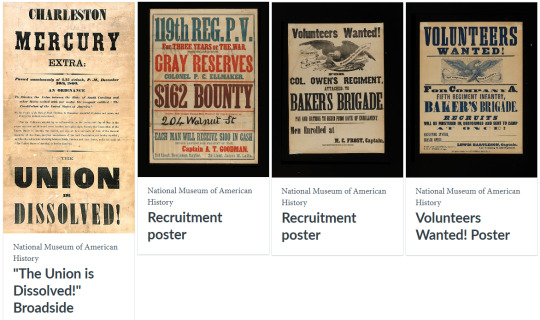

Below are objects that show how the Union and the Confederacy dealt with money problems, while also exploring what was considered money then and who produced it.


The objects below belonged to the men and boys who fought on the front lines for both Confederate and Union forces. They represent what soldiers wore, what they ate, how they coped, and what they held dear to them. These items, more often than not, were the only possessions soldiers kept while enlisted; on many are personal touches added by the owner.


Below are a few objects used as weapons by both Confederate and Union armies.

Below are a few objects used by or presented to the leaders of Union and Confederate forces.

For many Americans, both civilian and military, who lived through the conflict, the Civil War was the monumental event of their lifetime. They collected relics as they adjusted to the immediate consequences of the war. The nation grappled with the residual effects of the Civil War for more than a century. Below are objects that evoked different memories from the war.

Sources: 1 2 3 4 5 ⚜ More: Notes & References
It's nice to hear this, thanks so much! <3 Hope these notes help as quick references. Further research might be needed if you're planning to write something more detailed.
#anonymous#writing reference#history#writeblr#dark academia#spilled ink#creative writing#writing inspiration#writing notes#writing prompt#light academia#lit#literature#writing#writing resources
26 notes
·
View notes
Text
After an academic discussion about the ramifications of trying to benefit from time travel, Peter Corrigan has suddenly found himself transported from 1961 back to April 14th, 1865. Corrigan desperately tries to prevent the assassination of President Abraham Lincoln. While his efforts are in vain, thanks in part to the intervention of John Wilkes Booth, when Corrigan does return to the present he finds that he has altered the course of time after all. ("Back There" Twilight Zone, TV)
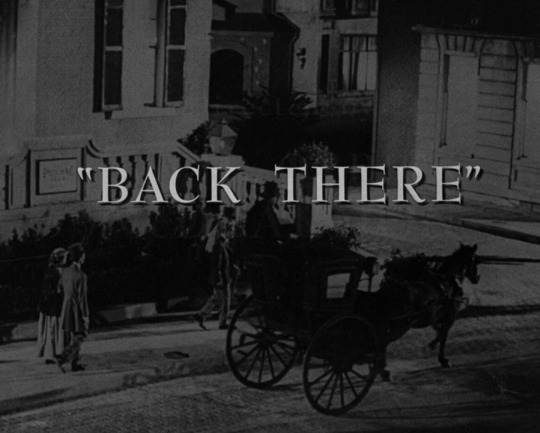
#nerds yearbook#time travel#sci fi tv#twilight zone#tz#1961#1865#april#rod serling#david orrick mcdearmon#assasination#civil war#abraham lincoln#russell johnson#pete corrigan#paul hartman#bartlett robinson#john lassell#jimmy lydon#raymond bailey#raymond greenleaf#john eldredge#james gavin#john wilkes booth#jean inness#lew brown#president#carol eve rossen#nora marlowe#pat o'malley
11 notes
·
View notes
Text
Happy birthday Lucille Sharpe! (April 1st, 1865)


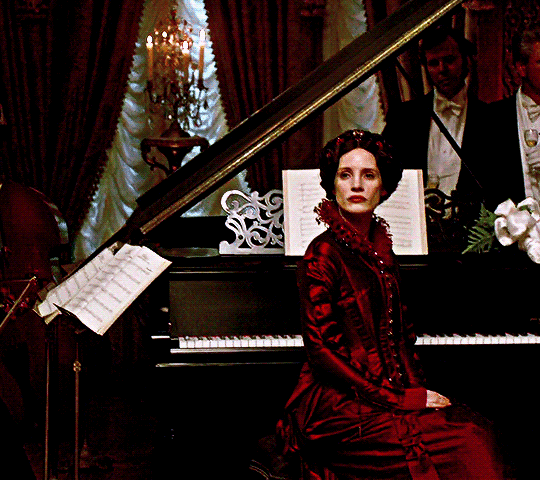
54 notes
·
View notes
Text
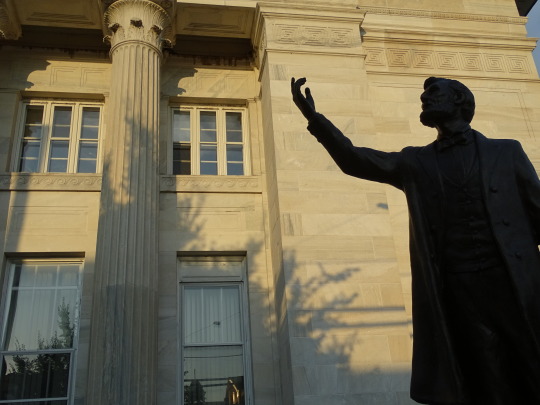
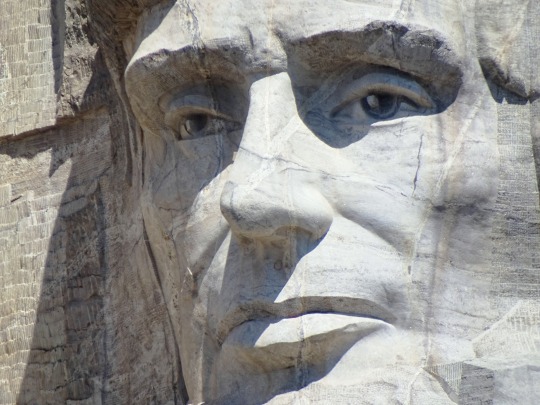
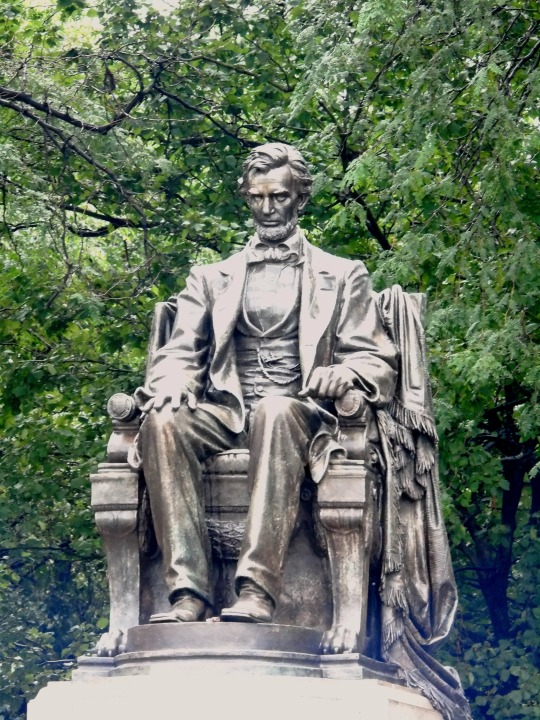


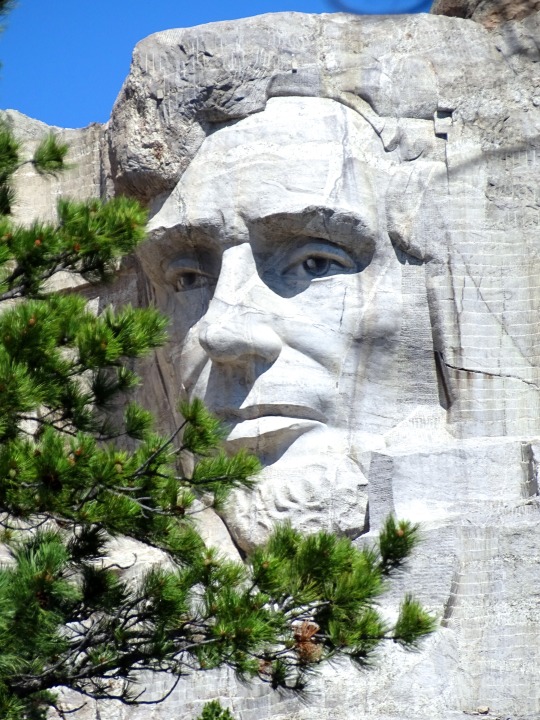
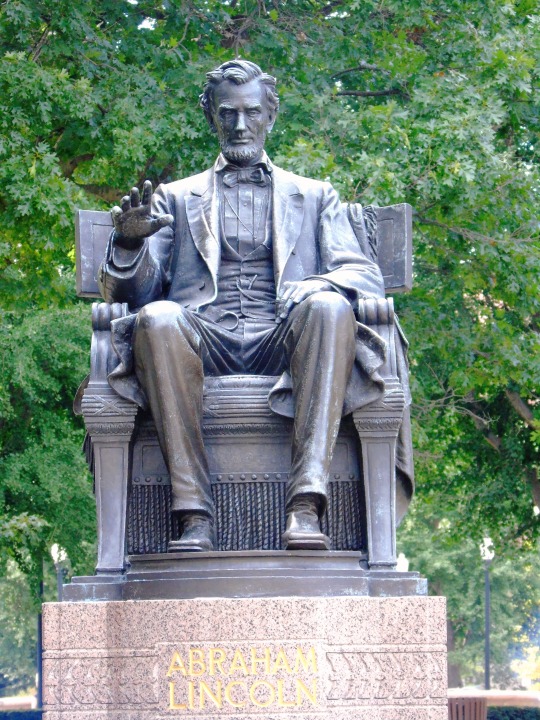
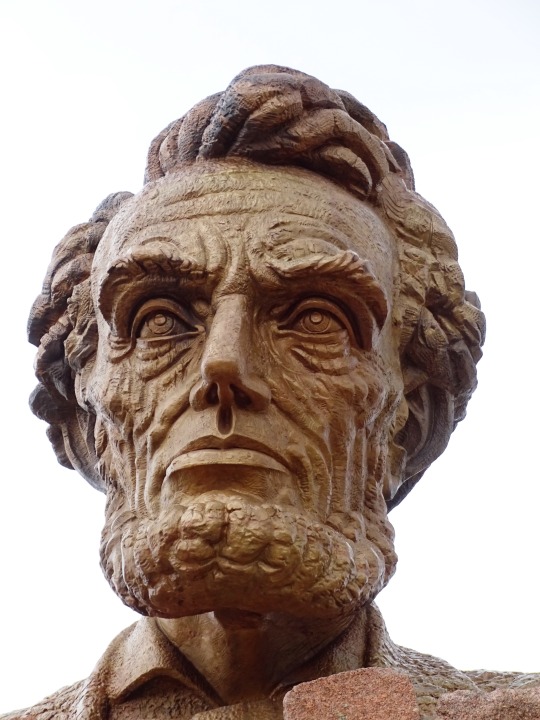
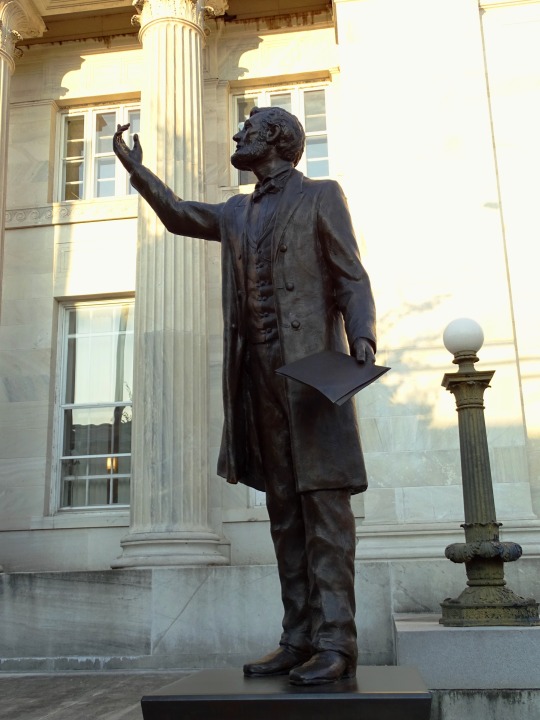
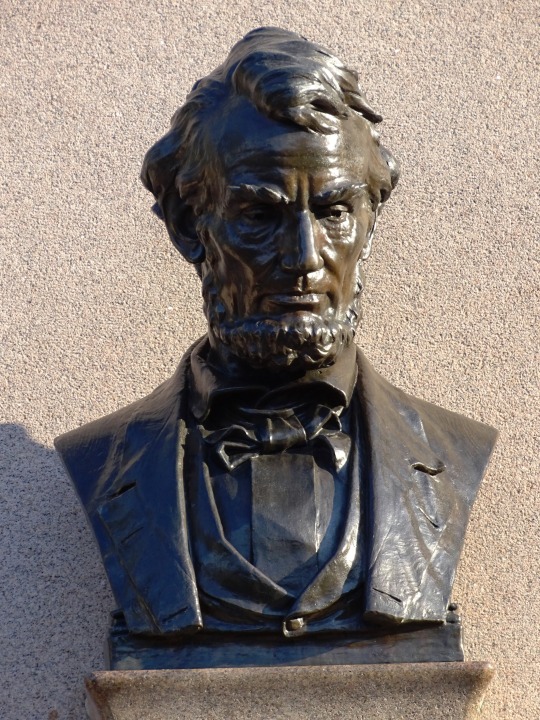

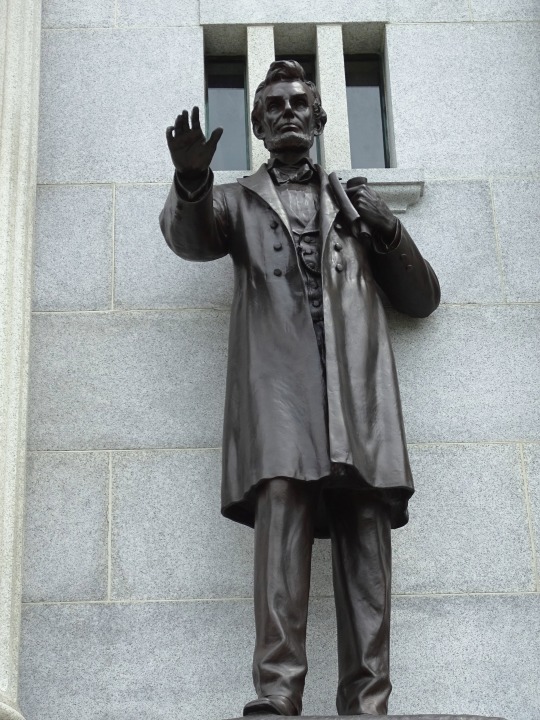
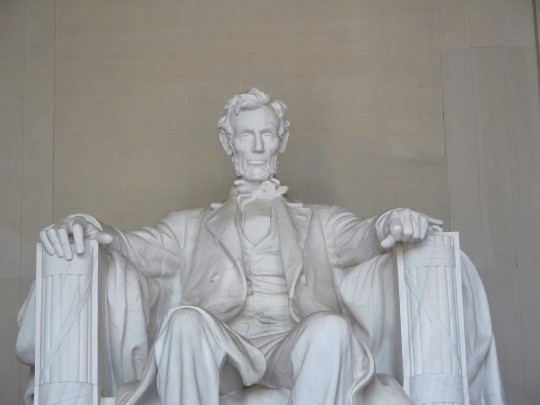
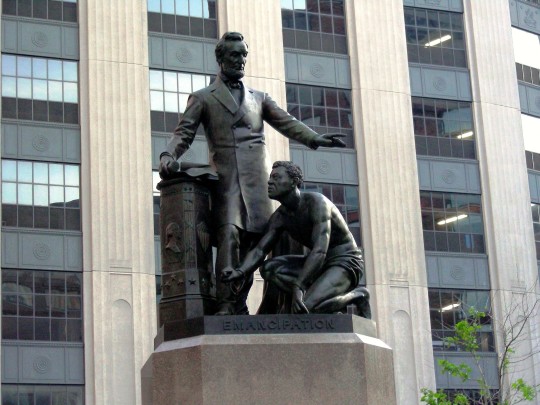
US President Abraham Lincoln was shot by John Wilkes Booth at Ford's Theater in Washington D.C. on April 14, 1865.
#Abraham Lincoln#born#14 April 1865#anniversary#Lincoln Memorial#Henry Hering#Seated Lincoln#Augustus Saint Gaudens#statue#art#Washington DC.#Indianapolis#Chicago#USA#history#travel#original photography#vacation#tourist attraction#landmark#cityscape#architecture#US history#shot#Gettysburg#Sherman Summit#Robert Russin#Mount Rushmore National Memorial#Henry K. Bush-Brown#Lincoln’s Gettysburg Address Memorial
2 notes
·
View notes
Text

0 notes